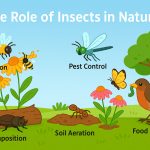Bird migration is one of nature’s most spectacular phenomena. Each year, billions of birds fly thousands of kilometers across continents and oceans. They follow ancient routes in search of food, better weather, or breeding grounds. These journeys connect ecosystems across the globe and highlight the amazing endurance and navigation skills of birds.
Why Birds Migrate
Birds migrate mainly for survival and reproduction. Key reasons include:
- Seasonal changes: As temperatures drop in colder regions, food becomes scarce. Birds migrate to warmer areas where food is available.
- Breeding: Many birds fly to specific regions during spring and summer to breed and raise chicks in safer, resource-rich environments.
- Avoiding competition: By spreading out, birds reduce competition for food and nesting sites.
Types of Bird Migration
- Latitudinal Migration:
Birds move north-south between breeding and wintering grounds (e.g., Arctic Terns). - Altitudinal Migration:
Some species, especially in mountains, move up and down slopes depending on the season. - Partial Migration:
Not all individuals in a species migrate. Some stay if conditions remain favorable. - Nomadic Migration:
Irregular migration depending on food availability (common in desert or forest birds).
How Birds Navigate
Birds rely on multiple cues to find their way:
- Sun and stars for direction
- Earth’s magnetic field
- Landmarks like mountains or coastlines
- Inherited instincts and learned behavior
Some species, like the Arctic Tern, can travel over 70,000 km annually—from the Arctic to Antarctica and back!
Common Migration Routes (Flyways)
Global bird migrations follow specific routes called flyways, often shaped by geography and climate:
- East Atlantic Flyway (Europe to West Africa)
- Pacific Flyway (Alaska to South America)
- East Asian-Australasian Flyway
- Mississippi and Atlantic Flyways in North America
Stopover sites along these routes are crucial for birds to rest and refuel.
Dangers Birds Face During Migration
- Loss of habitat at stopovers and breeding grounds
- Climate change disrupting timing and food availability
- Hunting and illegal trapping in some regions
- Collisions with buildings, wind turbines, or power lines
- Exhaustion and bad weather
Conservation efforts focus on protecting migration corridors and habitats.
Famous Migratory Birds
- Arctic Tern: Longest migration route
- Bar-tailed Godwit: Non-stop flights over oceans
- Swallows: Return to the same nesting site every year
- Storks and Cranes: Migrate in large flocks using thermal air currents
Why Bird Migration Matters
- Maintains healthy ecosystems by controlling pests and spreading seeds
- Connects distant ecosystems and highlights global biodiversity
- Acts as an indicator of environmental health and climate change impacts
Conclusion
Bird migration is a natural wonder that supports life on every continent. It shows how deeply interconnected our planet is. By protecting birds and their migratory routes, we help sustain ecosystems and honor one of nature’s greatest journeys.
Glossary
- Migration: Seasonal movement of animals from one region to another
- Flyway: A path regularly used by birds during migration
- Stopover: A resting and feeding spot used during migration
- Instinct: Inborn behavior that guides animals without being learned
- Thermals: Rising columns of warm air used by birds to glide


